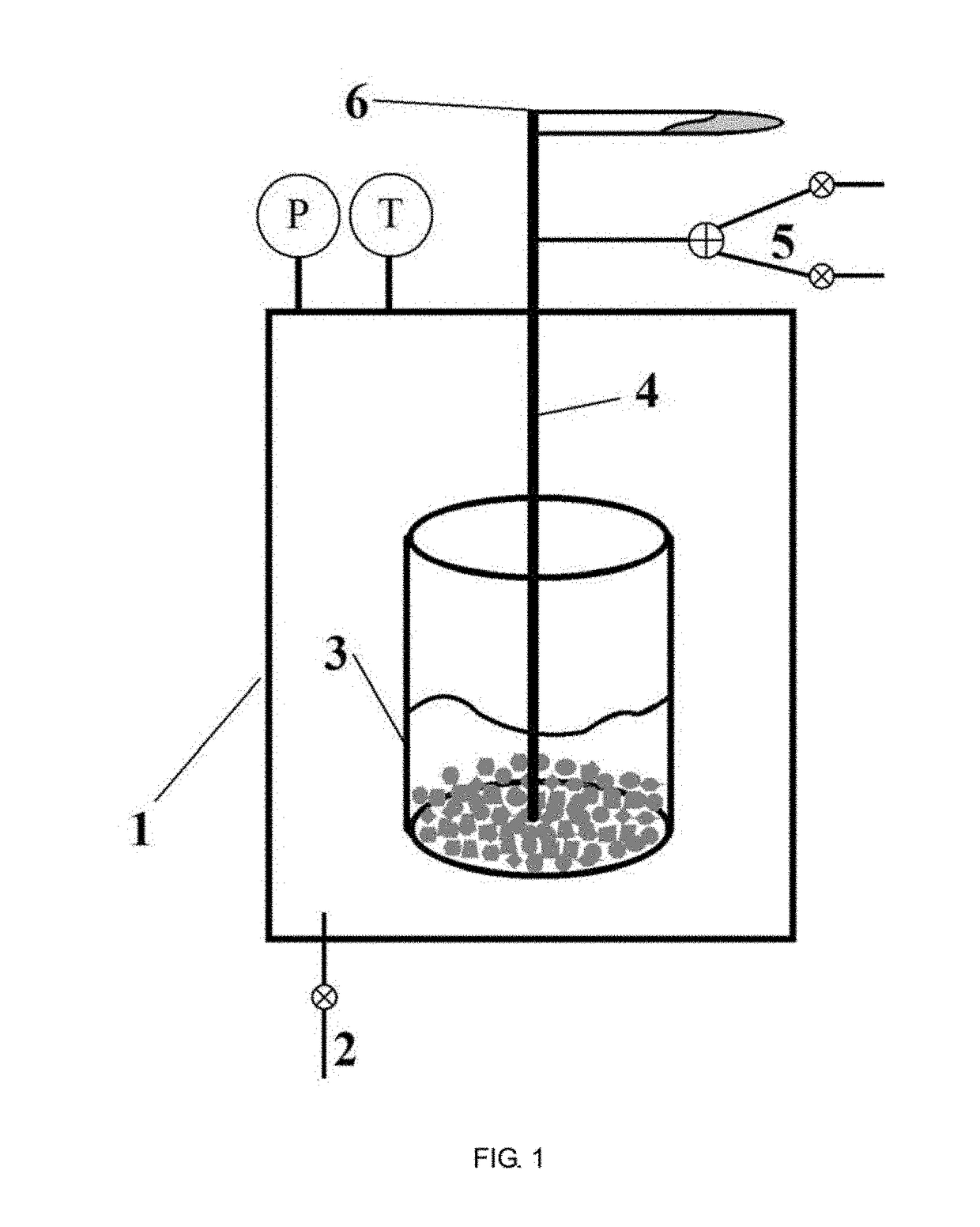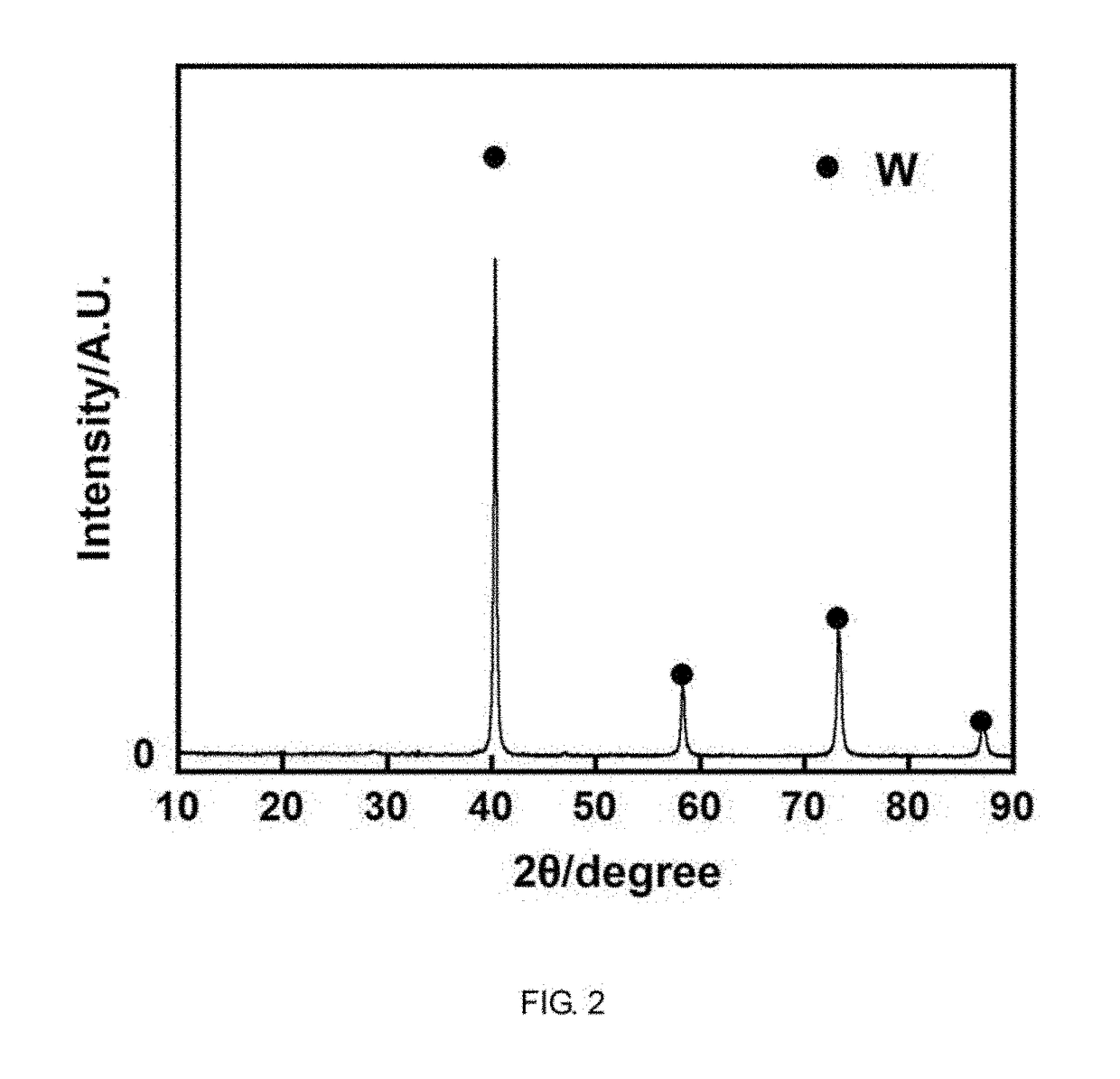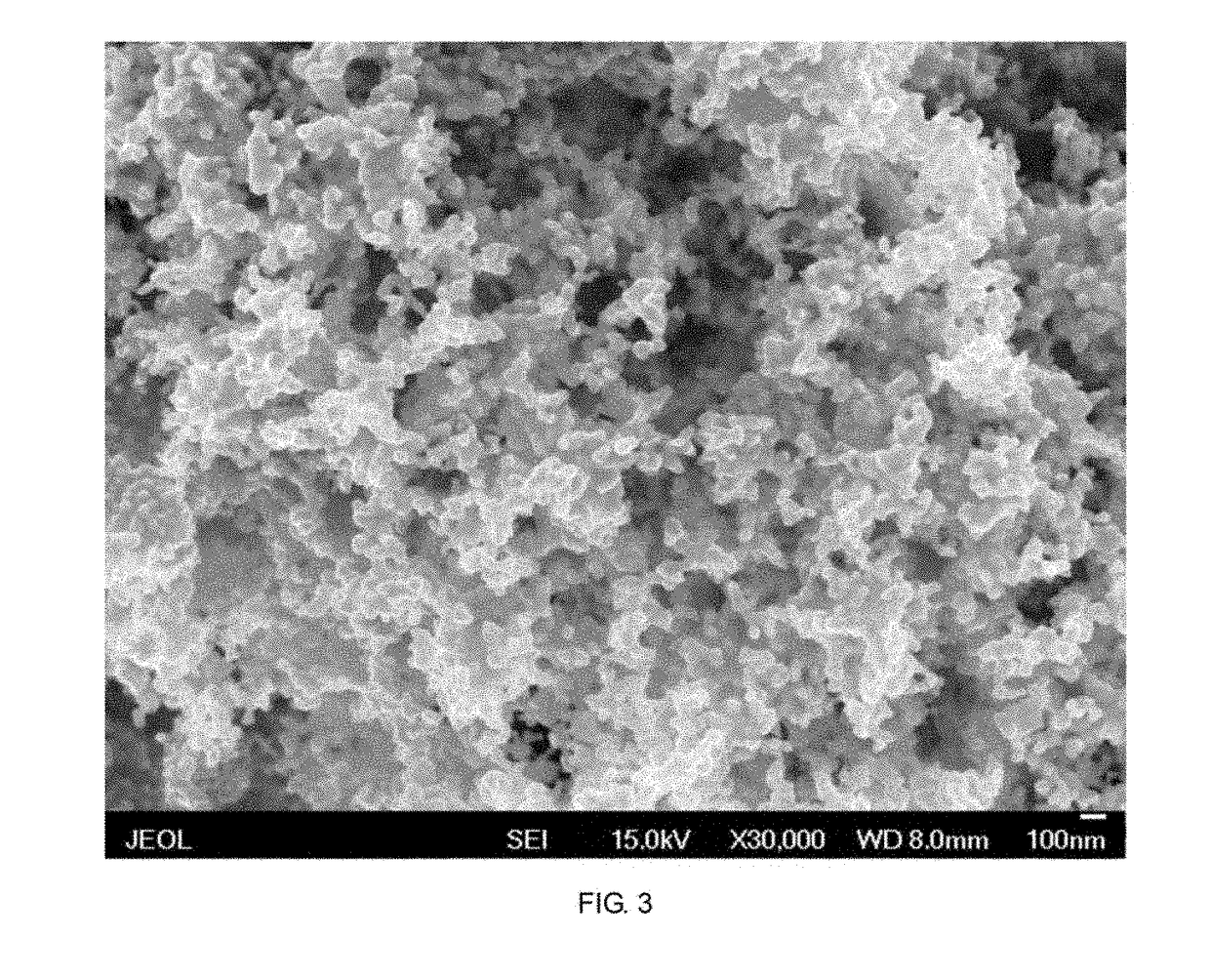Method for recycling waste cemented carbide by molten salt chemistry
a cemented carbide and molten salt technology, applied in the field of metallurgical engineering technology, can solve the problems of high energy consumption, high energy consumption, and high energy consumption, and achieve the effects of reducing the amount of cemented carbide in the product, and improving the quality of cemented carbid
- Summary
- Abstract
- Description
- Claims
- Application Information
AI Technical Summary
Benefits of technology
Problems solved by technology
Method used
Image
Examples
embodiment 1
[0041]The embodiment describes a method for preparing tungsten nanopowder by utilizing molten salt to recycle waste WC cemented carbide, comprising the following steps: dehydrating the molten salt with mole percentage of NaCl-52 mol % CaCl2-3 mol % CaO under vacuum, vacuum degree is 0.1˜0.2 MPa, and dehydration temperature is 70˜300° C.; adding waste WC cemented carbide into the molten salt media, introducing air to carry out oxidation dissolution-decarburizing reaction, and the oxidation temperature is 750° C. Gradually decreasing the air flow and increasing the inert gas argon flow along with the oxidation-dissolution reaction After 5 hours of oxidation-dissolution reaction, replacing air with chlorine to form mixed gas of 50% chloride and argon to carry out deoxidation reaction, and gradually decreasing the chloride content with the deoxidation reaction until completing after 6 hours, and replacing chlorine with argon to carry out gas protection, meanwhile, the reductant sodium m...
embodiment 2
[0043]The embodiment describes a method for preparing WC nanopowder by utilizing molten salt to recycle waste WC cemented carbide, comprising the following steps: dehydrating the molten salt with mole percentage of NaCl-52 mol % CaCl2-3 mol % Na2O under vacuum, vacuum degree is 0.1˜0.2 MPa, and dehydration temperature is 70˜300° C.; adding waste WC cemented carbide into the molten salt media, introducing oxygen to carry out oxidation-dissolution reaction, and the oxidation temperature is 700° C. Gradually decreasing the air flow and increasing the inert gas argon flow along with the oxidation-dissolution reaction. After 4 hours of oxidation-dissolution reaction, replacing oxygen with hydrogen chloride to form mixed gas of 50% hydrogen and argon to carry out deoxidation reaction, and gradually decreasing the hydrogen chloride content with the deoxidation reaction until completing after 2 hours, and replacing hydrogen chloride with argon to carry out gas protection, meanwhile, the red...
embodiment 3
[0045]The embodiment describes a method for preparing WC-Co nanopowder by utilizing molten salt to recycle waste YG16 WC-Co cemented carbide, comprising the following steps: dehydrating the molten salt with mole percentage of NaCl-52 mol % CaCl2-5 mol % CaO under vacuum, vacuum degree is 0.1˜0.2 MPa, and dehydration temperature is 70˜300° C.; adding waste YG16 WC-Co cemented carbide into the molten salt media, introducing oxygen to carry out oxidation-dissolution reaction, and the oxidation temperature is 750° C. Gradually decreasing the air flow and increasing the inert gas argon flow along with the oxidation-dissolution reaction. After 6 hours of oxidation-dissolution reaction, replacing oxygen with hydrogen chloride to form mixed gas of 50% hydrogen and argon to carry out deoxidation reaction, and gradually decreasing the hydrogen chloride content with the deoxidation reaction until completing after 3 hours, and replacing hydrogen chloride with argon to carry out gas protection, ...
PUM
| Property | Measurement | Unit |
|---|---|---|
| Temperature | aaaaa | aaaaa |
| Temperature | aaaaa | aaaaa |
| Temperature | aaaaa | aaaaa |
Abstract
Description
Claims
Application Information
 Login to View More
Login to View More - R&D
- Intellectual Property
- Life Sciences
- Materials
- Tech Scout
- Unparalleled Data Quality
- Higher Quality Content
- 60% Fewer Hallucinations
Browse by: Latest US Patents, China's latest patents, Technical Efficacy Thesaurus, Application Domain, Technology Topic, Popular Technical Reports.
© 2025 PatSnap. All rights reserved.Legal|Privacy policy|Modern Slavery Act Transparency Statement|Sitemap|About US| Contact US: help@patsnap.com



